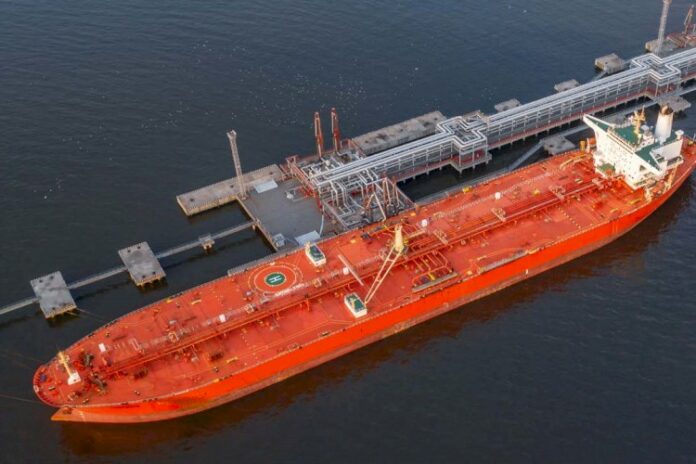This draws on learnings over the past few months as well as experience from the transition from HFO to distillate fuels in 2015 with NAVIGO MCL Ultra (20BN).
Using the right cylinder oil, such as NAVIGO MCL Extra with extra detergency, is only the first step to avoid excessive liner wear on VLSFO. Feed rate optimization is equally important for good engine condition, in combination with engine inspections and monitoring the wear metal content of drain oil samples. The feed rate optimization process involves Cylinder Scrapedown Analysis (CSA) at regular intervals, provided by LUKOIL as part of their OPTIMIZE program. The switch to VLSFO or between different VLSFO blends can still be challenging and requires careful attention.
The fuel that operators are switching from, the new fuel and how the transition is managed all play a major role in ensuring a smooth changeover. HFO is stable because it contains many polar hydrocarbons. Distillate fuels are non-polar and can cause instability in mixtures. Many ULSFO and VLSFO blends are such mixtures. When changing over from HFO to these fuels, the sludge, asphaltenes and cat fines which may have accumulated over time while on HFO can remain on the tank bottom and walls or in the fuel system unless these are fully cleaned or flushed as it was recommended before the transition to VLSFO.
This issue can be made worse because the ability of distillates, ULSFO and VLSFO to absorb cat fines and asphaltenes can cause them to be carried through to the filter, purifier and engine. Cat fine levels at the inlet to the main engine must be below 15 ppm, ideally below 8 ppm. Some ULSFO and VLSFO are treated with additives to improve their stability, but these further increase the fuel’s absorbance and must be handled with care.
Mixing fuels can cause problems due to incompatibilities which cannot be completely avoided. Measures to manage this risk include; segregating the fuel qualities, minimizing mixing and monitoring filter, purifier and engine condition. Engine monitoring includes, for example, regular inspections and adjusting the feed rate where necessary, as well as regular laboratory analysis of scrape down samples.

Some 100 BN cylinder oils, such as NAVIGO 100 MCL, offer improved detergency. Therefore, in some cases high BN cylinder oil is used for a short time to counteract deposits in the engine. In the long run, however, using excessive BN with VLSFO will lead to deposits in the piston top land and ring pack, which can ultimately lead to scuffing and, consequently, loss of liners and off-hire of the vessel. By contrast, NAVIGO MCL Extra has detergency comparable to a 100 BN cylinder oil but a lower alkalinity or neutralization capacity (BN). This keeps the engine free of deposits without the risks of excessive BN. A sufficient feed rate is required to prevent scuffing.
Another risk related to using high BN cylinder oil continuously for VLSFO operation is that it will change the surface structure of the liner and counteract the controlled corrosion that MAN favors in order to keep the surface rough. In this situation new rings are required to reduce the risk of scuffing. Extensive trials and monitoring have shown that NAVIGO MCL Extra provides exceptional scuffing resistance, but there is a limit to what can be achieved by lubrication. Hence, ring condition is critically important. Cermet coating provides improved scuffing resistance. The thickness of the cermet coating must be monitored and the rings must be replaced before reaching the critical values defined by the OEM, as MAN explains in its Service Letter SL2019-685 and WinGD’s ‘Guide for judging condition of relevant piston-running components’.
A liner that has experienced scuffing needs to be machined or exchanged, because the resulting hard surface cannot recover. In this case, exchanging only the piston rings will be insufficient, because the surface structure of the liner would still be polished and unable to provide enough lubrication.
An optimal feed rate is always better than an excessive feed rate. However, due to the surface structure of the liner and the ring coating, VLSFO operation can be compared to a constant running-in process. Running-in is the most critical operation mode for an engine and an increased feed rate is required to improve the oil film thickness and reduce the risk of scuffing. Hence, each engine must be evaluated individually and the condition of liners and rings dictates the required feed rate. For example, micro seizures in the liner indicate an elevated risk of scuffing and the need for a higher feed rate. At a stabilized condition, the feed rate can then be gradually optimized while closely monitoring the engine condition
It is also necessary to consider potential loss of efficiency in old, worn lubricators. These might not sustain the expected feed rate and the resulting deviation is more critical on VLSFO then it may have been on HFO. An insufficient feed rate and BN while on VLSFO can also lead to cold corrosion and resulting high wear.

If an engine is not equipped with a piston cleaning ring or mini-sac nozzle (FAST or slide-valve nozzle), increased fouling of the exhaust gas and piston running components, such as top land, may lead to oil film disturbance and ultimately scuffing.
Scuffing starts at the top dead center where the piston has zero speed. If surface roughness is low, there will be less oil available and abrasive wear will start there. The type and condition of the ring coating in combination with a higher feed rate help to counteract this process, but it is important to use low BN cylinder oil optimized for VLSFO operation such as NAVIGO MCL Extra.
An elevated feed rate is also required to flush out wear particles to prevent further abrasive wear by the piston ring. This is comparable to the running-in process and must not be confused with the purpose of the cylinder oil’s detergency. The oil’s detergency keeps the ring groove and back of the ring clean and free of deposits to ensure that the ring can move freely. If ring movement is impaired, the load on the ring increases and so does the risk of scuffing. The correct feed rate and BN level of a cylinder oil with low alkalinity but increased detergency is needed to keep liner, piston and ring pack clean and with controlled wear levels.
Generalizing high feed rates as harmful is incorrect and may even be dangerous for certain engines. We highly recommend following OEM recommendations and lubricant manufacturers’ advice at all times.



